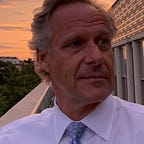2021 Pritzker Prize Timely Celebration of Humility Over Hubris
We’re coming up on the end of “awards season” — Grammys. Emmys. Oscars, Golden Globes. With so little to do in 2020, many of us have actually seen the nominated shows and movies and thought about how this art reflects life. Suffice it to say there is less red carpet and more Black people, more recognition of the talents of women and less cleavage and chit chat about who is wearing whom.
Another prize bestowed this time of year is the Pritzker Prize. Established in 1979 by the Pritzker family’s Hyatt Foundation, it recognizes a living architect or architects for, “significant contributions to humanity and the built environment through the art of architecture.”
Unless one follows design, it is easy to miss — and often a shame to miss — “architecture’s Nobel.” This year’s prize was especially poignant. As much, if not more than the movies, music, songs honored in these weeks, the 2021 Pritzker laureates’ work spoke dramatically, artfully, and meaningfully about the human condition.
This year’s recipients of $100,000 and a bronze medallion are Anne Lacaton and Jean-Phillipe Vassal of France. The Jury Citation celebrates them for “renewing the legacy of modernism” in part by “responding to the climatic and ecological emergencies of our time, as well as social urgencies, particularly in the realm of urban housing.”
That sounds like a bold and all-encompassing assertion-by-blueptint of humans’ mastery over epochal forces. In fact, Lacaton and Vassal’s power is rooted in thoughtful humility. The two are partners in an architectural vision and practice that declares, “Never demolish, never remove or replace, always add, transform, and reuse!” They have applied this credo materials, the natural world, and people, often in the service of affordable housing. They reflect a reverent awareness of the world around us and remind us of our symbiotic relationship to it.
Case in point: Rather than chopping down 46 trees to make way from home, they came up with a way to build around the trees and native vegetation, blurring the borders between indoors and outdoors. The tactile and aromatic essence of the great outdoors are one with the interior space of the shelter.
Inadvertantly, many of us have paid hommage to Lacaton and Vassal in our confinement over the last year. We’ve been clever about reclaiming indoor and outdoor spaces. Kitchens, basements, patios — even closets — have become offices and classrooms. This has given us time to reflect on our relationship to the physical world. Some of us are spread out in comfort and surrounded by blessings too numerous to count. Others are confined to what has become to them an ugly cell that deepens psychological or physical isolation. Or something in between for many of us.
Perhaps our confinement has also sharpened our sense of how we consume and helped us better distingush between wants and needs, which would please Lacaton and Vassal. The COVID glut of of high-end commercial and residential real estate space in New York, San Francisco, and other cities might present an opportunity for the teachers, first responders, clerks, waiters, technicians and others who make these cities so spectacular to once again live in them, instead of enduring two-hour, one-way commutes.
There were many fine performances, creative spirit, and commitment to our noblest aspirations for one another celebrated in this year’s awards season. “Nomadland” probably spoke best on how the human condition has grown gargantuan, unfair, and wasteful — and also how there is virtue in humility. In this way, Lacaton and Vassal are a step ahead of pop culture. They show us the beauty of design that serves our needs and not our egos and honors the planet instead of our vanity.
Lacaton and Vassal were cited for “renewing the legacy of modernism.” What an interesting twist they they do this by recapturing, restoring, and reusing more of what we have already created. That should inspire us to think about our own role in modernity. In our crowded, chaotic, and dirty journey on this Earth, we have come to a moment where we need to reimage, reuse and rethink — or die. It is new way of thinking of architect Ludwig Mies van der Rohe’s maxim that “less is more.”
